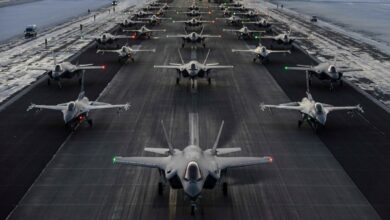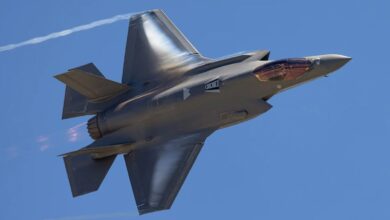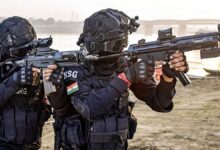In-Depth Analysis: India’s Preparedness Near LAC

In the previous post we revealed Chinese belligerence near the LAC. In this post, we will try to look into India’s preparedness. But much won’t be revealed due to security reasons.
India has ensured that her guard remains up in view of the Chinese posturing and maintained a large number of troops in the area near LAC.
As part of the troop push into eastern Ladakh, several units from Jammu and Kashmir were pumped in last year. For example, following the Galwan clash, a Rashtriya Rifles (RR) sector was moved to the Galwan Valley area. While units under Uniform Force, a formation in Jammu and Kashmir, were also brought in.

India has also fortified its positions and prepared its troops for a long haul there as deployments of additional forces and rotations have been going on.
The forces deployed by the Indian side in Ladakh include the Indo Tibetan Border Police, Indian Air Force, and Indian Army which is now at the forward most locations in the sector.

Scrambling in response to Chinese aggression, India has moved over 3 additional Divisions each with 10,00-12,000 troops to Ladakh. Deployment of fighter planes, as well as attack and heavy-lift helicopters on forward bases, has been done. Also, frequent deployment of frontline aircraft like Rafale fighter jets has been done. M777 Ultra Lightweight Howitzers, meant for mountainous terrains and armoured vehicles have also been deployed.

Order Of Battle
In modern use, the order of battle of an armed force participating in a military operation or campaign shows the hierarchical organization, command structure, strength, disposition of personnel, and equipment of units and formations of the armed force.
The army has also implemented key changes in the Order Of Battle (ORBAT) to counter the PLA. According to sources, the army has retained a higher number of troops and equipment in Ladakh, besides the 3 Division, in charge of the LAC and the 14 Corps reserve.
Key Changes In ORBAT
Army chief General M.M Naravane in January had outlined his broad plans for rebalancing the western theatre to the north.
Key Developments
The Army currently has four strike corps — the Mathura-based I Corps, the Ambala-based II corps, the Bhopal-based 21 Corps, and the partially-raised 17 Corps. The primary role of a strike corps is offensive trans-border action against an adversary.
I Corps

The I Corps, earlier responsible only for western theatre bordering Pakistan, is now being realigned to also look at northern theatre. While one of its Armoured formations would continue to be with it.
This will be in addition to the existing Leh-based 14 Corps that currently looks after the security of eastern Ladakh. The Allahabad-based 4 Division and the Bareilly-headquartered 6 Mountain Division will form the core of 1 Corps meant as a strike formation for eastern Ladakh
The deployment of formations and troops in the Sugar sector, Central sector, and the northeastern borders have also been strengthened
XVII Corps

The Panagarh-based, 17 Mountain Strike Corps is the Indian Army’s only strike corps that is responsible for carrying out offensive operations against China in case of a war. 17 Mountain Strike Corps (MSC) which had been operating till now with only one Division has now received another. It will be used for both eastern and northern sectors. MSC is also getting a new HQ Reserve Artillery Brigade with specialized equipment.
In effect, the Udhampur-based Northern Command will now have one more Corps for utilisation in Ladakh.
Armoured Division
The 33 Armoured Division, based in Hisar, of the Strike Corps has now become the Army Headquarters Reserve Division. Another Division, drawn from a different pool which focuses on mountain warfare has now been attached with the Strike Corps.

Field Peace Turnover
One key is the focus on the “Field Peace Turnover” issue because the Ladakh stand-off has put up a lot of pressure on this key issue.
The term is used for the policy that troops posted in a battle zone get peace postings after a particular period of time and vice versa. This is important to maintain the mental and physical fighting capability and hence is a worry for the force. Sources said the army’s focus is on ensuring that there are adequate troops to counter any Chinese aggression near LAC.
BRO’s Exceptional Undertakings

BRO has been working relentlessly even during the raging pandemic. BRO even undertook missions so as to keep the supply line open for the Indian Armed forces near LAC. It even worked in freezing temperatures to keep strategic roads open for the Indian Army in Eastern Ladakh.

India is building a “critical road” on the border with China in Ladakh, the government told Parliamentary Standing Committee on Home Affairs, on March 15. The road is being built as a “standalone” project. But doesn’t reveal the exact location of the road or the points it connects due to security reasons.
Additionally, BRO has been working tirelessly to complete connectivity projects near the border. Government report reveals around 538.5 km of road has been constructed on the India-China border till November 2020.

Among other things, the report says that India is currently working on 25 roads on the china border under phase 1 of the INDIA-CHINA BORDER ROADS (ICBR) project. 32 ICBR roads under the 2nd phase of the project. Construction/upgradation of 32 helipads, 18-foot tracks in Arunachal, 14 new ITBP Border Out Posts, and 12 staging camps.
Relentless Performance
In 2020, BRO improved its performance over the last year despite tensions in eastern Ladakh and a raging pandemic. According to the ministry of defence’s year-end review for 2020(Jan-Nov) , BRO undertook:
a. 1,993 km of formation cutting works.
b. 2,341 km of surfacing work.
c. Construction of 2,663mtr of bridges.
d. Executed 2,508 km of resurfacing work.
e. Rs 1,819 crore of permanent work.
While, according to ministry of defence’s year end review for 2019(jan-nov), BRO undertook:
a. 1,123 km of formation cutting works.
b. 2,099 km of surfacing work.
c. Construction of 2,557 mtr of bridges.
d. Executed 2,339km of resurfacing work.
c. Rs 1,601 crore of permanent work.
Conclusion
Many other defensive and offensive moves have been made by the Indian Armed forces. But due to security reasons, further details can’t be revealed.
But the above preparations prove that India is on full alert. Whatever misadventures PLA is planning near the LAC, will face the full wrath of Indian armed forces.
Sources: The print, Bharat Shakti, wikipedia








